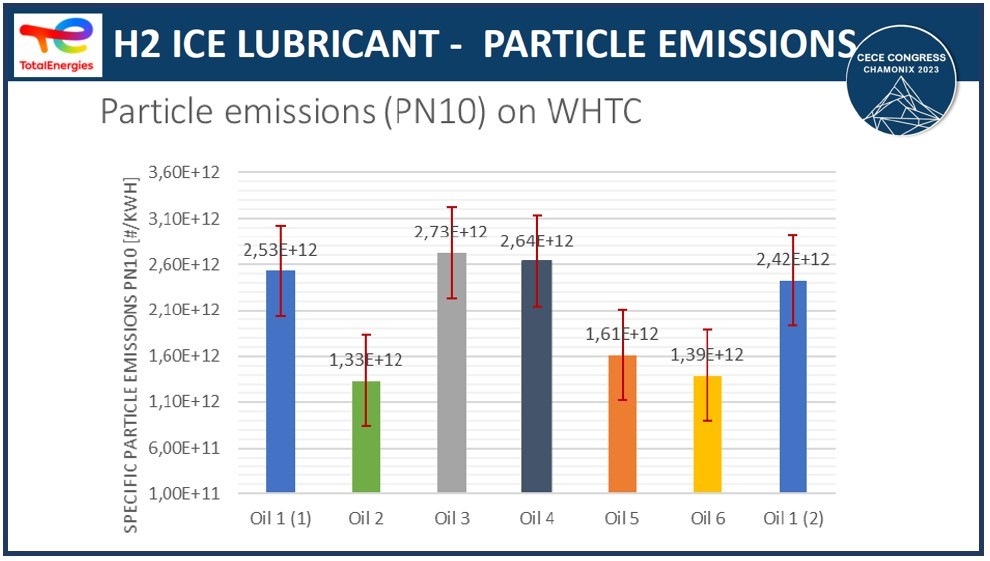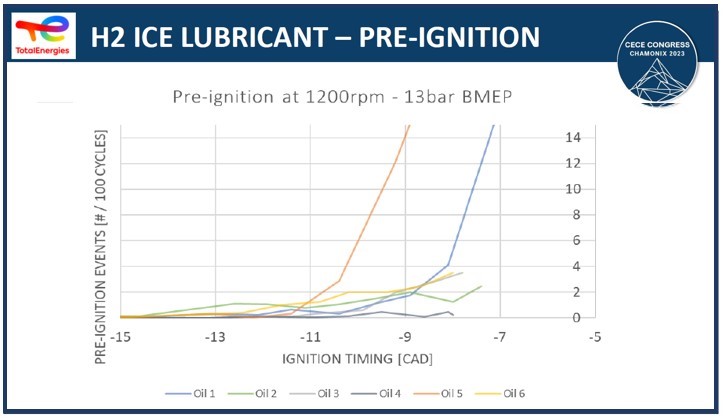Role of lubricants for hydrogen in ICE
Pierre Chapelot, product development department, OEM Liaison Heavy Duty & Off Road at TotalEnergies Lubrifiants, addressed the role of lubricant for hydrogen in internal combustion engine. The presentation tackled the preliminary findings of a series of tests conducted by TotalEnergies committed to developing adapted and optimised products to support the implementation of decarbonised solutions.
Pierre Chapelot reported on the efforts to make lubricant suitable for the hydrogen combustion engine technology. The research conducted starts from the specific properties of the hydrogen combustion technology: zero-carbon emissions, water as combustion product, lower ignition energy, and hydrogen high diffusion.
The goal is to measure, on a 7.7 Liters, 6 cylinders engine, the level of CO2 emissions taking into account the CO2 emissions at intake and exhaust, the particle emissions (PN10) at engine outlet, and quantify pre-ignition events, by measuring cylinder pressure.
On the level of CO2 emissions from oil, he pointed that TotalEnergies conducted tests with 6 different types of oil. The findings revealed the level of CO2 emissions stays below the limit of 1gCO2/KWH, regardless of the oil used for the engine.
 On particle emissions, he highlighted measurements were conducted with reference to the exit of the engine, without exhaust gas after treatment. The results show particle emissions above Euro6 limits and stage V limits, where standard oil is used. This practically implies the need of a particulate filter after the engine. However, it was clarified that the use of different types of oil formulation has the potential to significantly reduce the number of particles.
On particle emissions, he highlighted measurements were conducted with reference to the exit of the engine, without exhaust gas after treatment. The results show particle emissions above Euro6 limits and stage V limits, where standard oil is used. This practically implies the need of a particulate filter after the engine. However, it was clarified that the use of different types of oil formulation has the potential to significantly reduce the number of particles.
On the measurement of pre-ignition events, the test consisted in putting all different oils into the same engine. The findings presented illustrate that when using the classic diesel oil, a huge quantity of pre-ignition events is registered. But other chemical formulation of lubricant are possible to improve the situation, and reduce carbon-emission rates, while increasing the power density.

Go back to the Technical Bulletin